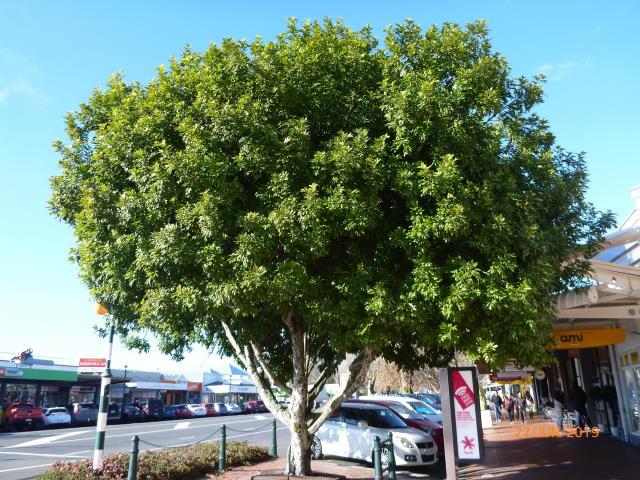
Titoki (Alectryon excelsus)
Popular as a street tree, two of these titoki are situated near the lower roundabout on Victoria Street. Normally a lowland forest tree in the North and upper South Islands, titoki has pinnate leaves, a twisting trunk and can grow to 19 metres. Purple flowers in spring are followed by a red fruit, palatable only to keruru, tui and kokako. It is this red fruit, resembling a cockscomb, which gives the plant its name, for Alectryon was a Greek soldier who enraged one of the gods and was turned into a rooster.
Within the fruit are tiny black seeds, highly prized by Maori for the production of a fine oil. Traditionally this was used on hair, and when mixed with red ochre was smeared on the body as a sign of mana. It could also be mixed with sweet smelling flowers or gum to make perfumes. Titoki oil was a status symbol because of its scarcity. Titoki trees were not numerous and many seeds were needed to make a little oil, which had to be extracted by a laborious process involving the application of heat and pressure simultaneously. Hence as a cosmetic the oil was usually reserved for rangatira families. Maori also used the oil medicinally to massage painful joints, to treat wounds and sores and inflamed eyes, to relieve constipation, and to keep insects away. The wood is both strong and elastic and was used by Maori for making adze handles.
The early European settlers used titoki oil for a lubricant in fine machinery such as clocks, and the wood, which takes a polish well, was used for cabinetry and coaches. In time however both groups replaced titoki oil with whale oil which, in the nineteenth century, was much more plentiful and easier to obtain. (Robert Vennell, Meaning of Trees)

